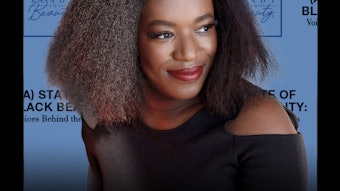- Consumer market intelligence is vital for beauty brands that want to enter the marketplace or change or expand their offerings with new introductions.
- Gathering the right type of information by asking the right questions is an important part of using market intelligence well, as is using it to discover the true motivations of your target consumer.
- All intelligence isn’t always good intelligence, so learn to weigh what will work for a brand versus what won’t, and learn how to best act on the consumer market intelligence available.
When developing or refining a beauty brand, the most essential guidelines to follow are those that the consumers define—what products they want and how they want them. And often the best way to find out what consumers want is through consumer market intelligence.
“Consumer market intelligence for the beauty industry consists of consumer demographics and the buying habits therein,” says Rosilyn Rayborn, founder of Smackages, a beauty and makeup trends website. “Brands must analyze a consumer’s complete path to purchase from discovery to fulfillment and beyond to identify where their specific products fit into this path to purchase.”
Applying the knowledge gained from market intelligence can help direct a brand to pinpoint the desires of its target market and capitalize on that knowledge with any new products or line extensions, because it’s all about understanding what the consumer wants. Jane Henderson, global president of the beauty division for market intelligence provider Mintel International Group, says, “Consumer market intelligence is only as good as the questions you ask or the data you collect. For beauty, understanding the three I’s is key—innovation, impact and internationalization. Understanding behavior traits and forecasting consumers’ buying habits is critical.”
Whether a brand is just starting out in the marketplace or has a long track record of successful products, introducing something new always requires targeted consumer insight. “Relying on consumer intelligence is very beneficial to beauty brands. It enables brand owners to make informed decisions when planning their strategies,” explains Rayborn. “A slight miscalculation can cost a company money, mar its reputation and even give its competitor the upper hand, so when making these decisions, they must be backed by some logical data to be as informed as possible, and market intelligence drives those very critical decisions.”
And that intelligence is becoming more and more available. Henderson comments that Mintel has seen substantial growth in the past two years in terms of beauty consumer research and the market’s reach, saying, “There are so many people helping beauty brands now—all the ingredient companies, all the distribution companies, all the contract manufacturers—each industry segment has experts available that can help expedite the process and offer more options for creating a successful brand. At Mintel, we always look at the full picture—markets, consumers and innovation.”
Doing in-depth consumer market intelligence is really one of the best ways to get to know a consumer, and relying on past information or generalizations typically won’t cut it. “Our team of beauty experts is always looking at the consumers, future behavioral trends and their reaction to emerging micro and macro trends,” says Henderson, and Rayborn explains how the changing and evolving culture is intimately entwined in consumer intelligence. “The face of the consumer is changing into something no one has ever seen,” she says. “For instance, Gen Y consumers are very different consumers from other generations like Gen X or boomers, and brands must look closely at this new consumer to understand what drives their purchases in order to create products and experiences that meet their unique needs. This can only happen by analyzing rich consumer intelligence. For brands whose goal is to be the first to capitalize on consumer trends, there’s no way to gauge these subtle characteristics and plan your marketing strategy without consumer intelligence.”
Getting Useful Information
Gathering true quality market intelligence can be tricky, however, especially if people know they are being observed on their habits.
Henderson notes that Mintel’s intelligence-gathering process surveys current assets and begins with elements it trusts as a starting point. “Review what is available from a reputable source that has the correct data and expertise to base predictions on,” she says, and goes on to note it is important for beauty brands to incorporate their own knowledge into this intelligence in order to make the information relevant. “The beauty business has always preferred a combined approach where a team of experts makes sense of credible and relevant sources, rather than provides more noise,” Henderson explains. “For example, we provide future market sizes and combine them with insights drawn from more than 48,000 beauty products every year—with a focus on the concept developments from both niche and multinational players. Tailored research always helps if the brand wants to explore a unique proposition, which may give it the next advantage in the marketplace.”
And in addition to industry reports, publications and events, Rayborn comments that today’s social media-centric culture can provide valuable information in and of itself, saying “good, old-fashioned listening” can be a brand’s best intelligence asset. “Fortunately, the fact that we live in what I call the era of overshare, where consumers provide tons of information freely via social networks, means that there’s no shortage of consumer intelligence—you just have to ask the right questions,” she says.
Using Market Intelligence Effectively
For as much market information as a beauty company can gather, if it’s not the right type of information, it’s unlikely to be helpful. “Context is important, as teams have to appreciate how consumer changes will affect their brands, leaving some room for instinct,” explains Henderson. “Sometimes it is wise to listen to new people in the team, as fresh perspectives can revive creativity. Because it is the passion behind the brand, combined with focus and commitment to continually challenge the relevance of the promise, that makes or breaks a brand. Standing still is a dangerous strategy.”
“While market intelligence should be considered when making decisions, one challenge brands face is the risk of responding before evaluating the data they’ve gathered,” Rayborn comments. “For instance, consider Twitter, Facebook and Foursquare—three proven, cost-effective platforms for engaging with consumers. While they’re proven, each platform provides a unique way to connect; engaging consumers on Foursquare is completely different from engaging them on Facebook. Failure to acknowledge and evaluate these differences can be harmful to brands.”
In order to get the best and most helpful use out of market intelligence, it is vital to fully consider where and how the information will be applied and used. “For this example, a brand would have to determine whether its consumer is on these new social media platforms regardless of the platform’s popularity,” Rayborn continues about social networking. “You may find that while a new social network is wildly popular, your consumer isn’t present on it, and any allocation of your resources on this effort would yield no value. Many resources can be exhausted if a company dives into action based on consumer intelligence without thorough analysis of the data it collects” For this reason, Rayborn notes that beauty brands shouldn’t make decisions based only on consumer market intelligence, and Henderson agrees, noting the need for additional considerations and support. “Advertising and marketing support is key to any beauty brand’s success, along with a focused retail strategy,” she comments.
Rayborn also goes on to say, “All data isn’t necessarily valuable data, and with so much of it available, brands must always focus on their bottom lines to make sure the data collected and any resulting actions are aligned with their business goals.” In fact, wasting resources on unachievable or illogical goals is something good research should point away from. “Consumer intelligence must be tempered with a clear set of goals to maintain brand integrity. If new data is gathered that doesn’t align with your business goals, you may not need to act on it,” Rayborn concludes.
Keeping the Momentum
As any beauty industry professional can attest, beauty consumers are constantly changing, leading to the need for brand owners to be constantly assessing and gathering market intelligence. “The world of beauty is international, with brands being challenged every day,” says Henderson. “Therefore, regular monitoring of launches is key. No one can afford to take an eye off the ball.” Rayborn agrees, saying, “Brands should always gather intelligence data. It’s not something you can turn on or off. Gathering intelligence is about constantly monitoring the beauty landscape to ensure that as soon as there’s a subtle change, you detect it early enough to evaluate it and consider how to use the information to your brand’s advantage.”
Because any insights that might be gained through today’s market intelligence might be old news by tomorrow. “As most companies work two years ahead, building the innovation pipeline is key,” Henderson says. “Ideation sessions are common place for successful brands. We have seen the concept development process increase at a rapid pace.” And in order to keep up with that pace, successful beauty brands need to continue to rely on quality consumer market intelligence to help them reach consumers effectively.
For more on consumer insights, “Marketing Matters” columns by both Liz Grubow and Alisa Marie Beyer are excellent resources. They, along with further discussion on social media, are available on www.GCImagazine.com.
In addition, please see the March 2011 The Whole Packaging column.
Abby Penning is associate editor of GCI magazine. She previously was the assistant editor for Skin Inc. magazine, where she won a silver FOLIO: Eddie award in 2009.











